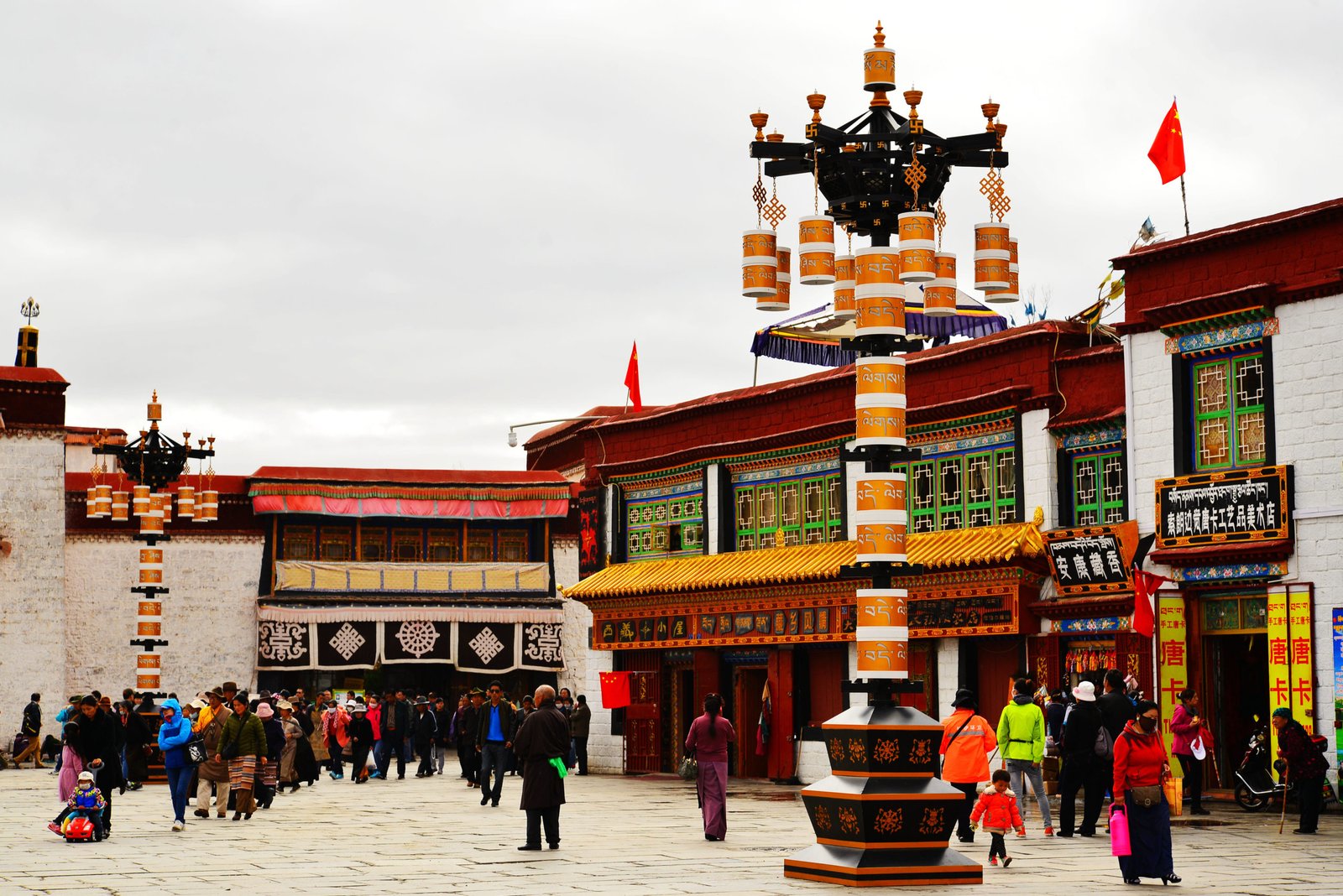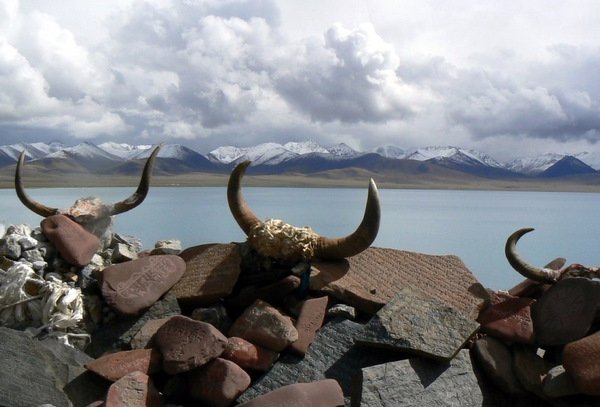Title: Lhasa Calling: Unraveling the Mysteries of the Sacred City

Introduction:
Nestled amidst the towering peaks of the Himalayas, Lhasa, the capital of Tibet, beckons travelers with its rich cultural heritage, sacred sites, and breathtaking natural beauty. This insider’s guide takes you on a journey to explore the enigmatic city of Lhasa, offering practical tips, insights into Tibetan culture, and a curated list of must-see attractions.
Unveiling the Sacred Sites:
Lhasa serves as the spiritual heartland of Tibet, home to some of the most revered Buddhist monasteries and temples. The Potala Palace, a UNESCO World Heritage Site, stands as the epitome of Tibetan architecture and was once the residence of the Dalai Lama. Its majestic presence dominates the Lhasa skyline, inviting visitors to delve into its opulent chambers and sacred halls.
Jokhang Temple, another UNESCO-listed site, holds immense religious significance for Tibetan Buddhists. Devotees flock to this sacred site to pay homage to the Jowo Shakyamuni, a revered statue believed to be the most sacred image of Buddha in Tibet. The temple’s intricate artwork, vibrant murals, and serene atmosphere create an ambiance of peace and tranquility.

Sera Monastery, renowned for its lively debates among monks, offers a glimpse into the philosophical traditions of Tibetan Buddhism. Visitors can witness the monks engaged in animated discussions, delving into intricate concepts of Buddhist teachings. The monastery’s serene courtyards and colorful frescoes provide a visual feast, while the vibrant energy of the monks creates a unique and unforgettable experience.

Venturing Beyond the Sacred Sites:
While Lhasa’s religious landmarks are undoubtedly mesmerizing, the city offers a plethora of other captivating experiences. The Barkhor Street, a bustling hub of activity, encircles the Jokhang Temple. Here, pilgrims and locals alike engage in a clockwise circumambulation, reciting mantras and spinning prayer wheels. The street is lined with shops selling Tibetan handicrafts, souvenirs, and traditional Tibetan garments.
For those seeking a taste of Tibetan cuisine, Lhasa offers a culinary adventure. Momos, steamed dumplings filled with minced meat or vegetables, are a staple dish enjoyed by locals and tourists alike. Thukpa, a noodle soup brimming with flavors and vegetables, is another must-try dish. For a sweet treat, indulge in Tibetan butter tea, a unique blend of tea, yak butter, and salt, enjoyed as a customary beverage in Tibetan culture.
The Norbulingka Palace, located on the outskirts of Lhasa, showcases traditional Tibetan architecture and offers a glimpse into the personal lives of the Dalai Lamas. The vast gardens, serene ponds, and colorful pavilions provide a tranquil escape from the city’s hustle and bustle.
Practical Tips for a Smooth Journey:
To ensure a seamless and enriching visit to Lhasa, consider these practical tips:
- Altitude Sickness: Lhasa lies at a high altitude, and altitude sickness can be a concern. Acclimatize gradually, avoid strenuous activities upon arrival, and stay hydrated.
- Respect Local Customs: Be mindful of local customs and traditions. Dress modestly, avoid pointing at religious objects, and always ask permission before taking photographs of people or religious sites.
- Language Barrier: English is not widely spoken in Lhasa. Consider hiring a guide or learning basic Tibetan phrases to facilitate communication.
- Responsible Tourism: Practice responsible tourism by respecting the environment and local culture. Dispose of waste properly, avoid littering, and support local businesses.
- Weather Conditions: Lhasa experiences a wide range of weather conditions due to its high altitude. Pack clothing suitable for both warm and cold weather, and be prepared for sudden changes in temperature.# Lhasa Calling: An Insider’s Guide To Visiting The Sacred City
Executive Summary
Lhasa, the capital city of Tibet, is a fascinating destination with a rich history and culture. Known as the “Sacred City” due to its numerous temples and monasteries, Lhasa is also a treasure trove of stunning natural beauty. This article provides a comprehensive guide to visiting Lhasa, covering essential sightseeing spots, fascinating local experiences, and recommendations for accommodation and dining options. With practical travel tips, insights into Tibetan culture, and recommendations for responsible tourism, this guide equips travelers with the knowledge and inspiration they need to explore the wonders of Lhasa.
Introduction
Lhasa, a city steeped in history and spirituality, is a must-visit destination for travelers seeking unique cultural and natural experiences. Located in the heart of the Tibetan Plateau, Lhasa’s unique geographical location and diverse traditions have shaped its distinct cultural identity. With its stunning monasteries, sacred temples, and vibrant street life, a visit to Lhasa promises an extraordinary adventure. To help you make the most of your trip, let’s delve into the highlights and essential aspects of visiting this captivating city.
Top 5 Subtopics
1. Exploring Lhasa’s Sacred Sites
Lhasa is renowned for its stunning array of spiritual landmarks, which are a testament to its deep-rooted religious beliefs. These sacred sites are not only architectural marvels but also hold profound spiritual significance for Tibetan Buddhists.
Potala Palace: A UNESCO World Heritage Site, the Potala Palace is an iconic symbol of Tibet. This grand palace was the former residence of the Dalai Lama and a masterpiece of Tibetan architecture. Delve into its sprawling courtyards, admire intricate murals, and soak in the spiritual ambiance that permeates the palace.
Jokhang Temple: Considered the most sacred shrine in Tibet, the Jokhang Temple is a pilgrimage destination for Buddhists worldwide. Marvel at its golden roof, exquisite statues, and colorful prayer flags. Feel the palpable sense of devotion as pilgrims circumambulate the temple, prostrating in reverence.
Sera Monastery: One of the most significant Gelugpa monasteries, Sera Monastery is known for its lively debates between monks, an intriguing tradition showcasing their mastery of Buddhist philosophy. Observe these debates, explore the monastery’s serene courtyards, and witness the vibrant Tibetan culture firsthand.
2. Experiencing Tibetan Culture
Tibetan culture is a beautiful tapestry of unique traditions, distinct art forms, and a deep reverence for nature and spirituality. Exploring this culture offers a profound understanding of Tibet’s identity and heritage.
Tibetan Traditional Medicine: Discover the ancient healing practices of Tibetan medicine. Visit traditional pharmacies, where shelves are stocked with herbs and minerals, and learn about the holistic approach to health and well-being.
Tibetan Arts and Crafts: From intricate carpets and rugs to exquisite Thangka paintings, Tibetan artisanship is a reflection of the region’s rich artistic history. Explore the bustling markets and workshops, meet skilled artisans, and admire their beautiful creations.
Tibetan Cuisine: Indulge in the flavors of Tibetan cuisine, which blends local ingredients with culinary influences from neighboring regions. Sample momos (steamed dumplings), thukpa (noodle soup), and Tibetan tea, all infused with aromatic spices and herbs.
3. Natural Wonders Surrounding Lhasa
Lhasa is surrounded by breathtaking natural beauty, from towering mountains to serene lakes and lush valleys. Explore these natural wonders to experience the raw beauty of the Tibetan Plateau.
Namtso Lake: Located just a few hours from Lhasa, Namtso Lake is the highest saltwater lake in the world. Witness its stunning turquoise waters, snow-capped peaks, and nomadic yak herders grazing on its shores.
Lulang Forest: A short drive from Lhasa, Lulang Forest boasts towering pine trees, lush meadows, and crystal-clear streams. Take a leisurely hike or bike ride through this picturesque forest, soaking in the fresh mountain air and the tranquil surroundings.
Yamdrok Lake: Known as “the turquoise jewel of Tibet,” Yamdrok Lake is a stunning lake situated at an altitude of over 4,700 meters. Marvel at its crystal-clear waters, admire the snow-capped peaks reflected on its surface, and enjoy the serene atmosphere that envelops the lake.
4. Practical Travel Tips
Planning a trip to Lhasa requires careful consideration and preparation. These practical tips will ensure a safe and enjoyable journey.
Permits and Visas: Foreigners require a Tibet Travel Permit to enter Tibet. Ensure you have the necessary documentation and permits to avoid any travel disruptions.
Language and Communication: The primary language in Lhasa is Tibetan. Although some locals may speak Mandarin, it’s helpful to learn basic Tibetan phrases to enhance your interactions with the locals.
Altitude and Weather: Lhasa is located at a high altitude, and travelers may experience altitude sickness. Acclimate gradually, stay hydrated, and avoid overexertion. Be prepared for the unpredictable weather conditions that are common in the region.
5. Recommendations for Accommodation and Dining
Housing and dining option in Lhasa range from budget-friendly guesthouses to luxury hotels. These suggestions aim to cater to various preferences and budgets.
Accommodation:
- St. Regis Lhasa Resort: a luxurious hotel with stunning Himalayan views
- Lhasa Gang-Gyan Hotel: a centrally located hotel with comfortable accommodations
- Tashi Choeten Nyima Hotel: an affordable guesthouse with traditional Tibetan décor
Dining:
-Tibetan Kitchen: a popular restaurant serving authentic Tibetan cuisine